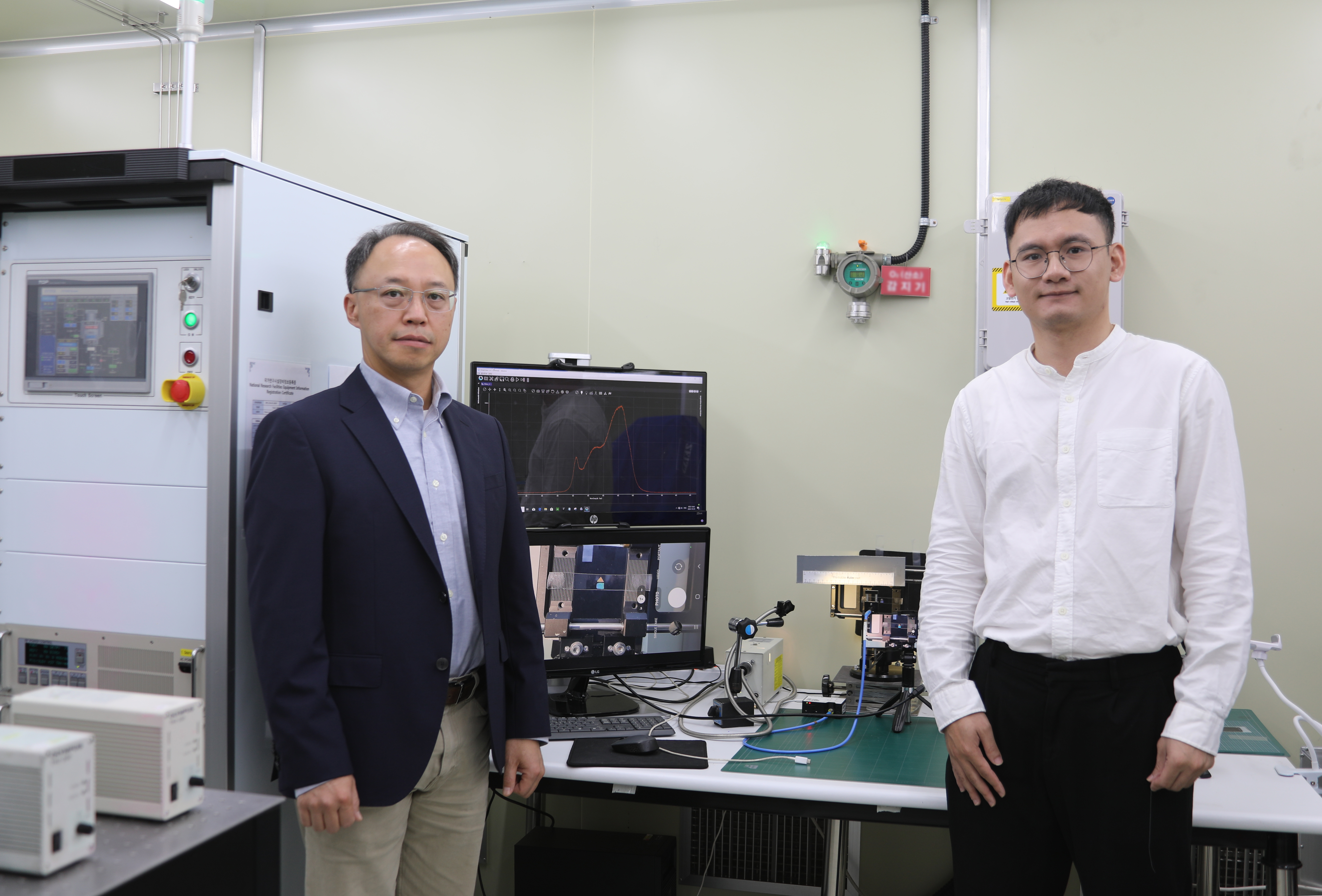
- Created2024.11.04
Structural Safety Monitoring of Buildings with Color Variations
- KIMM develops the world’s first monitoring technology using nano-optical sensor films
to detect deformation -
- Contributing to social stability with easy-to-use sensor and A.I. technology -
□ As buildings age, the demand for effective monitoring of their structural integrity has grown significantly. A breakthrough in nano-optical sensor technology now enables precise, real-time measurement of structural deformation and stability. This innovation promises to reshape the field of structural diagnostics, offering a cost-effective, time-efficient solution that reduces the need for specialized expertise traditionally required in this area.
□ Led by Dr. Jae Sung Yoon, Principal Researcher at the Nano-lithography & Manufacturing Research Center within the Nano-convergence Manufacturing Research Division at the Korea Institute of Machinery and Materials (President Seog-Hyeon Ryu, hereinafter referred to as KIMM), affiliated with the Ministry of Science and ICT, and Ph.D. candidate Nguyen Hoang Minh from the UST-KIMM School, the research team drew inspiration from the structural coloration observed in natural phenomena such as peacock feathers and morpho butterflies. The team successfully developed an advanced film-type strain sensor incorporating nano-fabrication technology. When applied to buildings or other infrastructure, the film’s color shifts in accordance with the extent and nature of deformation, facilitating the accurate and efficient detection of structural aging and damage for safety assessments.

Dr. Jae Sung Yoon (left), Principal Researcher at the Nano-lithography & Manufacturing Research Center
□ KIMM’s nano-optical sensor technology converts mechanical deformation into visual color changes through the use of nano-patterns. This approach visualizes deformation as image data, eliminating the need for pigments, dyes, or external power sources. By utilizing smartphone technology to quantify the color, precise and detailed measurements are achieved, streamlining the traditional structural monitoring and measurement process into a simple patch application.
□ A longstanding technical challenge in nano-structural coloration research has been the variation in color depending on the angle of observation. The research team has achieved a breakthrough by developing a technology that ensures consistent coloration regardless of the viewing angle, marking a world-first achievement. This novel nano-pattern maintains uniform color, providing a standard reference to compensate angle-related discrepancies, thus enabling precise measurements of deformation regardless of specific observation angles.
□ In addition, the research team has developed an AI-combined monitoring solution that analyzes color changes to assess potential risks. By diversifying measurement methods through smartphone applications, drones, robotics, CCTV, and other advanced technologies, they are now able to detect and analyze damage and risks in buildings and structures that were previously difficult to assess. Leveraging this core technology, the team also developed a film capable of controlling the manifestation of color, allowing for its application as a transparent film that reveals patterns only under specific conditions. This advancement holds significant potential for anti-counterfeiting and security film applications.
□ KIMM’s nano-optical sensor technology has led to the filing of over 10 domestic patents, as well as an international patent (PCT), with an additional U.S. patent currently under review. Furthermore, this technology was highlighted as the cover paper in the American Chemical Society (ACS) journal Applied Nano Materials and has been accepted for publication in the esteemed journal Nanoscale Advances by the Royal Society of Chemistry (RSC).
* Paper Title: "Photonic Crystals for Dichotomous Sensitivity to Strain for Sensor and Indicator Applications", ACS Applied Nano Materials, September 13, 2024, Volume 7, Issue 17.
□ The research team is actively collaborating with industry partners through technical briefings and exchanges. And the team is now entering technology transfer agreement with a company, aiming to accelerate the adoption of this innovation.
□ Dr. Jae Sung Yoon, Principal Researcher at KIMM, remarked, “This nano-optical sensor technology revolutionizes the assessment of structural aging and stability in buildings and facilities. By delivering a high-precision monitoring solution at a reduced cost, we aim to contribute to enhancing public safety and societal stability.”
□ This research was supported by the Ministry of Science and ICT’s STEAM research initiative, specifically through the ‘Nano-Optical AI Construction Safety Research Group’ (led by Dr. Jae Sung Yoon) under the Bridge Convergence Research program. The project, titled ‘Development of Smart Monitoring Technology for Building Safety and Disaster Management Based on Nano-Optics and Machine Learning,’ aligns with the ministry's mission to advance technological innovation for infrastructure safety.

Dr. Jae Sung Yoon (left), Principal Researcher at the KIMM, explains the measurement results of the film-type nano-optical device

Cover paper of APPLIED NANO MATERIALS
 photo1_Dr._Jae_Sung_Yoon_(left),_Principal_Researcher_at_the_Nano-lithography_Manufacturing_Research_Center.jpgDownload
photo1_Dr._Jae_Sung_Yoon_(left),_Principal_Researcher_at_the_Nano-lithography_Manufacturing_Research_Center.jpgDownload photo2_Dr._Jae_Sung_Yoon_(left),_Principal_Researcher_at_the_KIMM,_explains_the_measurement_results_of_the_film-type_nano-optical_device.jpgDownload
photo2_Dr._Jae_Sung_Yoon_(left),_Principal_Researcher_at_the_KIMM,_explains_the_measurement_results_of_the_film-type_nano-optical_device.jpgDownload photo3_Cover_paper_of_APPLIED_NANO_MATERIALS.jpgDownload
photo3_Cover_paper_of_APPLIED_NANO_MATERIALS.jpgDownload

